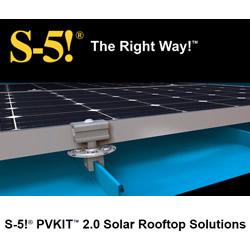How much does solar energy cost?
How much does a solar energy system cost? Surprisingly, not as much as you would expect due to nice solar tax incentives from the federal government, state governments, and power companies.
Solar panels produce power through generation of watts of energy. Panels come in different "strengths" or wattage levels. Solar panel sizes vary from very low wattage levels up to 250 watts worth of power. Solar systems are sold as complete installs by watt. This includes the cost of all supporting parts of the system in conjunction with the panels. The total cost of a solar energy system is made up of multiple factors. The panels themselves are one portion and the balance-of-system (BOS) is another part of the cost of a solar energy system. The BOS is essentially everything other than the solar panels – the electrical wiring components, the racking and mounting hardware, the inverter or microinverters, and the labor cost to install.
The national average cost per watt is somewhere between $6 dollars and $8 dollars per watt. Generally, the cost per watt of a solar energy system decreases due to economies of scale when more solar panels in a system (and a higher overall wattage level) are purchased. A small, 5 solar panels system that has a total power output of 1,150 watts (1.15kW) may cost $6.50 per watt while a larger 30 panel system that has a total output of 6,900 watts (6.9kW) may cost $6 dollars per watt. A large megawatt (MW) array may be as low as $4 dollars per watt.
When you purchase a solar energy system for your home or business you are purchasing a system that will produce power for your needs today and make you less dependent on power from your power company. We can all agree that the cost of power has increased over time and will continue to increase in the future. When you produce your own power, you protect yourself from these coming power rate increases. It may be easier to think about the cost of producing your own power with an automotive fuel cost analogy – if someone offered you a prepaid gas card that locked you into a $3 dollars per gallon rate of gasoline for the rest of your life would you take it? Definitely, because we all know that the cost of gas has increased over time and will continue to increase in the future.
The cost of a solar energy system can be looked at in the same light – you are locking yourself into a lower power rate today by producing your own energy and protecting yourself from the coming power rate increases. The more power you produce on your own is the same as requiring less power from your utility company. And when the cost of power goes up, the value of the power that your solar energy system generates increases as well.
Right now is a great time to consider purchasing a solar energy system due to different tax incentives that are available. In a residential scenario, a federal tax credit covers 30% of the cost and, in both Georgia and North Carolina, a state tax credit covers another 35% of the cost (different states have different incentives for their residents). So the cost of a residential solar energy system today can be bought at a 65% off sale compliments of very nice tax incentives. Additionally, most power companies offer other financial incentives that help reduce the cost of your solar energy system (in Georgia these utility incentives range from $300-$450 per kW). A typical payback period for a residential solar energy system is between 8 and 10 years.
In a commercial solar purchase scenario you have the same 30% federal tax credit (which can also be taken as a grant), the same 35% state tax credit in Georgia and North Carolina, and you also have an added depreciation incentive which brings the total solar energy cost savings from incentives to 90% or more. A typical payback period for a commercial solar energy system is 5 years or less.
Most solar energy systems are warranted for 10 to 15 years, sometimes 25 years when they are purchased from a high quality solar company, with an expected lifetime of 40 to 50 years. So the overall cost of a solar energy system is very minimal when you figure the system will quickly pay for itself and continue to save you more and more money in the future as the cost of power continues to increase.
Featured Product

